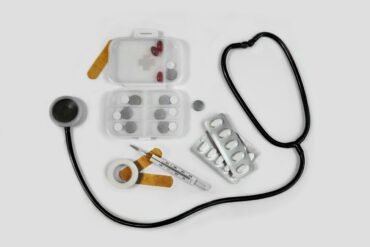Losartan vs. Atenolol: Blood Pressure Medication Comparison

Table of Contents
- Introduction to Losartan and Atenolol
- Mechanisms of Action
- Efficacy in Blood Pressure Control
- Side Effects and Safety Profiles
- Conclusion: Which Medication Is Right for You?
Introduction to Losartan and Atenolol
When it comes to managing high blood pressure, two commonly prescribed medications are Losartan and Atenolol. These medications belong to different drug classes and work in distinct ways to lower hypertension. Understanding their mechanisms of action and potential side effects is crucial for patients and healthcare professionals alike.
Losartan:
- Losartan is an angiotensin receptor blocker (ARB) that effectively lowers blood pressure by blocking the hormone angiotensin II from binding to its receptors. This prevents blood vessels from constricting, resulting in lower blood pressure levels.
- It is commonly prescribed to treat high blood pressure and can also be used to protect the kidneys in patients with diabetes.
- Losartan is typically taken once daily and can be used as a monotherapy or in combination with other antihypertensive medications.
- Common side effects may include dizziness, fatigue, cough, and muscle or joint pain. However, serious side effects are rare but may include allergic reactions or kidney problems.
Atenolol:
- Atenolol is a beta-blocker that works by blocking the effects of adrenaline on the heart and blood vessels, thus reducing heart rate and lowering blood pressure.
- It is commonly prescribed for treating hypertension, angina (chest pain), and preventing heart attacks.
- Atenolol is generally taken once daily. Abruptly stopping the medication should be avoided, as it may lead to serious withdrawal symptoms.
- Possible side effects of Atenolol include fatigue, dizziness, cold hands or feet, depression, and sexual dysfunction. In rare cases, it may cause serious adverse effects like slow heart rate, low blood sugar, or shortness of breath.
In conclusion, Losartan and Atenolol are both effective blood pressure medications, but they belong to different drug classes with distinct mechanisms of action. The choice between the two depends on individual patient factors, such as co-existing medical conditions, overall health, and potential drug interactions. It is essential for patients to consult their healthcare provider for proper evaluation and guidance in selecting the most appropriate treatment option to effectively manage their hypertension.
Mechanisms of Action
Losartan and Atenolol are both commonly used medications for the management of high blood pressure. While they belong to different drug classes, they function through distinct mechanisms of action to effectively control blood pressure. Understanding how these drugs work can shed light on their similarities and differences:
Losartan:
- Losartan is classified as an angiotensin receptor blocker (ARB), specifically targeting the angiotensin II type 1 receptor (AT1).
- Angiotensin II is a hormone that constricts blood vessels, thereby increasing blood pressure. Losartan works by selectively blocking the AT1 receptors, preventing the binding of angiotensin II.
- This action leads to vasodilation (widening of blood vessels) and reduces the secretion of aldosterone, resulting in decreased blood pressure levels.
Atenolol:
- Atenolol is classified as a beta-adrenergic receptor antagonist, commonly known as a beta-blocker.
- Beta-blockers work by binding to beta-adrenergic receptors located primarily in the heart and blocking the receptors’ activation by adrenaline and noradrenaline.
- By blocking these receptors, atenolol reduces the heart’s response to these hormones, thereby decreasing the heart rate and cardiac output, which ultimately lowers blood pressure.
Summary:
Both Losartan and Atenolol have different mechanisms of action, but they effectively lower blood pressure levels. Losartan blocks angiotensin II receptors, leading to vasodilation and reduced aldosterone secretion. On the other hand, Atenolol inhibits the activation of beta-adrenergic receptors in the heart, resulting in decreased heart rate and cardiac output. Understanding these mechanisms aids in choosing the most appropriate medication for an individual’s specific needs, considering factors such as other medical conditions and potential side effects.
Efficacy in Blood Pressure Control
When comparing blood pressure medications, such as Losartan and Atenolol, it is essential to evaluate their efficacy in controlling blood pressure levels. Efficacy refers to the ability of a drug to produce the desired therapeutic effects.
Both Losartan and Atenolol are commonly prescribed medications for managing high blood pressure, but they belong to different drug classes with distinct mechanisms of action.
Losartan is an angiotensin II receptor blocker (ARB) that works by blocking the action of angiotensin II, a hormone that constricts blood vessels, leading to increased blood pressure. By blocking the effects of angiotensin II at the receptor sites, Losartan helps to widen the blood vessels, promoting a decrease in blood pressure.
Atenolol, on the other hand, is a beta-blocker that works by blocking the effects of adrenaline on the beta receptors in the heart. This action slows down the heart rate, reduces the force of contraction, and ultimately lowers blood pressure.
When it comes to efficacy in blood pressure control, studies have shown that both Losartan and Atenolol can effectively lower blood pressure levels. However, Losartan has been found to be slightly more effective than Atenolol in achieving optimal blood pressure control.
One study compared the efficacy of Losartan and Atenolol in a group of patients with hypertension. It found that Losartan was superior to Atenolol in reducing both systolic and diastolic blood pressure levels. Additionally, Losartan was associated with better overall blood pressure control throughout the day.
It is important to note that individual responses to medications may vary, and different patients may have different levels of effectiveness with Losartan or Atenolol. Factors such as age, comorbidities, and other medications being taken should also be considered when determining the most suitable blood pressure medication.
In summary, while both Losartan and Atenolol are effective in lowering blood pressure, Losartan has been shown to be slightly more effective in achieving optimal blood pressure control. However, the choice of medication should be personalized, taking into account individual patient characteristics and medical history.
- Losartan and Atenolol are both effective in lowering blood pressure.
- Losartan, an ARB, blocks the effects of angiotensin II, widening blood vessels.
- Atenolol, a beta-blocker, slows down heart rate and reduces the force of contraction.
- Losartan has been found to be slightly more effective than Atenolol in controlling blood pressure.
Side Effects and Safety Profiles
When considering blood pressure medications, it is crucial to take into account their side effects and safety profiles. Both Losartan and Atenolol have distinct characteristics in terms of potential adverse reactions and overall safety.
Losartan:
- Losartan is well-tolerated by most patients.
- The most common side effects include dizziness, fatigue, and headache.
- Rarely, patients may experience allergic reactions such as swelling or difficulty breathing.
- Losartan may cause an increase in potassium levels, especially in patients with kidney problems.
- Pregnant women should avoid using Losartan as it may harm the fetus.
Atenolol:
- Atenolol is generally well-tolerated, but side effects can occur, particularly when starting the medication.
- Common side effects may include fatigue, dizziness, and cold hands or feet.
- Some patients may experience low heart rate or blood pressure, resulting in lightheadedness.
- Atenolol should not be abruptly stopped, as it may worsen angina or cause other heart-related issues.
- It is generally safe for pregnant women to use Atenolol under the supervision of a healthcare professional.
Overall, both Losartan and Atenolol have proved to be effective in managing blood pressure. However, individual variations in response and tolerance to these medications are possible. Therefore, it is crucial to consult a healthcare professional before starting or switching any medication.
Remember that this information serves as a general guideline and should not substitute professional medical advice. Your healthcare provider will assess your specific condition and medical history to determine the most suitable treatment option and ensure your safety.
Conclusion: Which Medication Is Right for You?
After comparing Losartan and Atenolol, both commonly prescribed medications for managing high blood pressure, it is important to recognize that each drug has its own set of benefits and potential side effects. Ultimately, the choice of medication should be made in consultation with a healthcare professional who can assess your specific medical condition and individual needs.
Here are some key points to consider:
- Losartan may be a preferable choice for individuals with co-existing conditions such as diabetes or kidney disease, as it has been shown to protect kidney function and improve cardiovascular outcomes.
- Atenolol, on the other hand, may be more suitable for those with a history of heart attacks or angina, as it can effectively reduce heart rate and control chest pain.
- Each medication may have different side effects. While both Losartan and Atenolol are generally well-tolerated, some common side effects of Losartan include dizziness, cough, and headache, while Atenolol may cause fatigue, depression, or cold hands and feet. It is important to discuss any potential side effects with your doctor.
- Other factors to consider include your overall health, lifestyle, and the presence of any other medications or supplements you may be taking. Your doctor can evaluate potential drug interactions and make an informed recommendation.
Remember, high blood pressure management is a long-term commitment. Regular blood pressure monitoring, lifestyle modifications such as a healthy diet and exercise, as well as adherence to medication, are essential for effective control. Always follow your doctor’s advice and attend scheduled check-ups to ensure your treatment plan remains appropriate and effective.
Ultimately, the right medication for you is the one that suits your specific medical needs, offers the most tolerable side effects, and provides optimal blood pressure control. Work closely with your healthcare provider to make an informed decision and achieve your blood pressure goals.


























